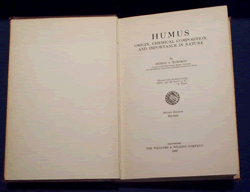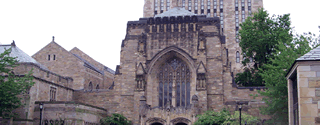| Sterling Memorial |
| Archives |
| Music |
| Divinity |
| Forestry |
| Kline Sciences |
| Medical Historical |
| Exhibit Map |
![]()
Selman Waksman, Humus: Origin, Composition, and Importance in Nature, 1938 Selman Waksman (1888-1973) extended Winogradsky’s influence in many ways: by adopting his research methods, participating in his expanding scientific network, assisting in publishing his 1949 collected works, and writing a laudatory biography of him. In Humus, Waksman applied Winogradsky’s methods and “cycle of life” perspective in his studies of humus (decaying organic material in the soil). For Waksman: The microorganisms influence the cycle of humus in nature in more than one way: 1. They bring about its formation from plant and animal residues. 2. They continuously transform humus and finally decompose it completely. 3. Their own cell substance contributes directly as a source of humus. The role of microorganisms in the cycle of organic matter in the soil, as well as in nature in general, is, therefore, indispensable.” (p. xiii) |
||
 |
||
Whitney Humanities Center
Yale University
53 Wall Street
P.O. Box 208298
New Haven, CT 06520-8298
Office: (203).432.3112
lloydackert@sbcglobal.net
The
Sterling Memorial Exhibit is located in the Overflow Case
to the left of the circulation desk. The Sterling Memorial
Library is located at
120 High Street
Yale University
New Haven, CT 06520
Map, Directions
